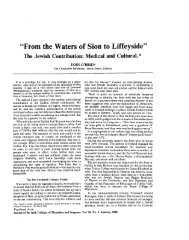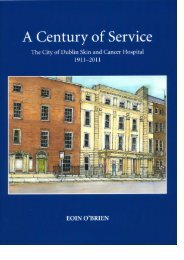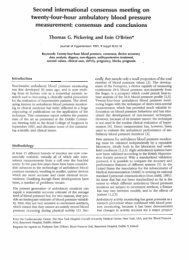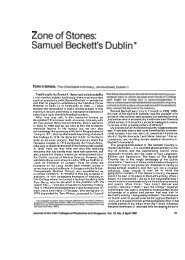Nevill Johnson: Paint the smell of grass - Eoin O'Brien
Nevill Johnson: Paint the smell of grass - Eoin O'Brien
Nevill Johnson: Paint the smell of grass - Eoin O'Brien
You also want an ePaper? Increase the reach of your titles
YUMPU automatically turns print PDFs into web optimized ePapers that Google loves.
time, but despite a not dissimilar mood shared between his work and <strong>Johnson</strong>’s, <strong>the</strong>re is no<br />
comparison to be sustained with him. There is a closer link with <strong>the</strong> paintings <strong>of</strong> Michael<br />
Andrews, who drank in and painted <strong>the</strong> Colony Room club in <strong>the</strong> 1950s and 1960s and might<br />
have met <strong>Johnson</strong> here or in ano<strong>the</strong>r Soho drinking spot.<br />
<strong>Johnson</strong> was to remain on his own as a painter and his greatest supporters and collectors were<br />
<strong>of</strong>ten from outside <strong>the</strong> world <strong>of</strong> art. The introduction to his next exhibition, at <strong>the</strong> Archer Gallery<br />
on Grafton Street in central London in 1972, was written by Dr Owen Franklin. <strong>Johnson</strong> himself<br />
included three thoughts that are an interesting guide to his sense <strong>of</strong> himself as a painter at that<br />
time.<br />
70 <strong>Nevill</strong> <strong>Johnson</strong> l <strong>Paint</strong> <strong>the</strong> Smell <strong>of</strong> Grass<br />
Silent Encounter<br />
Metropolis<br />
“<strong>Paint</strong>ing is an encounter. A struggle to uncover intuited structures.”<br />
“<strong>Paint</strong>ing is a physical, visceral engagement, a contact with primordial codes. A response and<br />
a responsibility.”<br />
“Of <strong>the</strong> work I make I am <strong>the</strong> first spectator. I am first-footing it in a strangely familiar place.”<br />
For a highly articulate man <strong>of</strong> literary inclinations, <strong>Johnson</strong> rarely pronounced on his own<br />
painting and it is revealing that all three <strong>of</strong> <strong>the</strong>se statements reinforce <strong>the</strong> idea <strong>of</strong> painting as an<br />
instinctive response to what is only expressed and understood through <strong>the</strong> act <strong>of</strong> making <strong>the</strong><br />
image. Owen Franklin writes <strong>of</strong> <strong>Johnson</strong> “using a grammar <strong>of</strong> symbols that he has developed,<br />
symbols not referent to linear logic, but hierarchic, beyond <strong>the</strong> word…in that way one can avoid<br />
<strong>the</strong> censor <strong>of</strong> one’s super-ego and suppress one’s conscious personality.”<br />
These artist’s statements recall <strong>the</strong> magical signs that guide us through <strong>the</strong> post-war painting<br />
and hint at <strong>the</strong>ir meaning, and <strong>the</strong> empty shores <strong>of</strong> a bare world that he painted in which we have<br />
to re-discover ourselves. The artist has to find a language <strong>of</strong> signs and visual forms that reveal <strong>the</strong><br />
<strong>Nevill</strong> <strong>Johnson</strong> l Wilby and after 1959–1977 71









